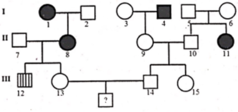Read the following passage and mark the letter A, B,C or D on your answer sheet to indicate the correct answer to each of the questions from 34 to 41.
Overpopulation, the situation of having large numbers of people with too few resources and too little space, is closely associated with poverty. It can result from high population density, or from low amounts of resources, or from both. Excessively high population densities put stress on available resources. Only a certain number of people can be supported on a given area of land, and that number depends on how much food and other resources the land can provide. In countries where people live primarily by means of simple farming, gardening, herding, hunting, and gathering, even large areas of land can support only small numbers of people because these labor-intensive subsistence activities produce only small amounts of food.
In developed countries such as the United States, Japan, and the countries of Western Europe, overpopulation generally is not considered a major cause of poverty. These countries produce large quantities of food through mechanized farming, which depends on commercial fertilizers, large-scale irrigation, and agricultural machinery. This form of production provides enough food to support the high densities of people in metropolitan areas.
A country’s level of poverty can depend greatly on its mix of population density and agricultural productivity. Bangladesh, for example, has one of the world’s highest population densities, with 1, 147 persons per sq km. A large majority of the people of Bangladesh engage in low -productivity manual
D. possibly D. do D. ways D. kilo D. on
farming, which contributes to the country’s extremely high level of poverty. Some of the smaller countries in Western Europe, such as the Netherlands and Belgium, have high population densities as well. These countries practice mechanized farming and are involved in high-tech industries, however, and therefore have high standards of living.
At the other end of the spectrum, many countries in sub-Saharan Africa have population densities of less than 30 persons per sq km. Many people in these countries practice manual subsistence farming; these countries also have infertile land, and lack the economic resources and technology to boost productivity. As a consequence, these nations are very poor. The United States has both relatively low population density and high agricultural productivity; it is one of the world’s wealthiest nations.
High birth rates contribute to overpopulation in many developing countries. Children are assets to many poor families because they provide labor, usually for farming. Cultural norms in traditionally mral societies commonly sanction the value of large families. Also, the governments of developing countries often provide little or no support, financial or political, for family planning; even people who wish to keep their families small have difficulty doing so. For all these reasons, developing countries tend to have high rates of population growth.
(From "Poverty" by Thomas J. Corbett)
Which of the following is TRUE, according to the passage?
A. In certain developed countries, mechanized farming is applied.
B. In sub-Saharan African countries, productivity is boosted by technology.
C. There is no connection between a country’s culture and overpopulation.
D. All small countries in Western Europe have high population densities.










